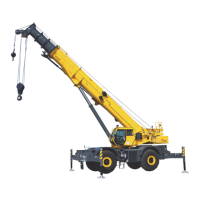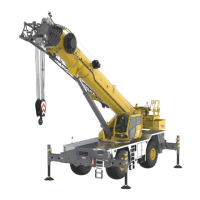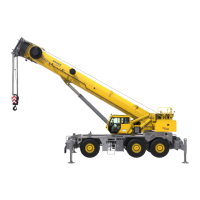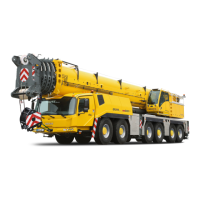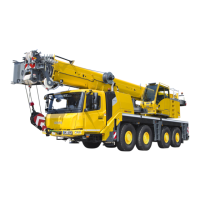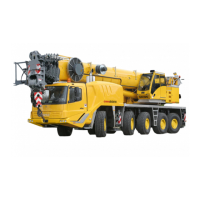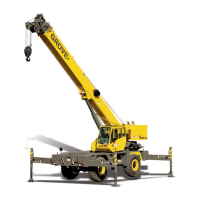MAINTENANCE AND LUBRICATION GRT880 SERVICE MANUAL
9-8
Published 10/19/2017, Control # 618-00
CYLINDER ROD SURFACE PROTECTION
Steel cylinder rods include a thin layer of chrome plating on
their surfaces to protect them from corroding. However,
chrome plating inherently has cracks in its structure which can
allow moisture to corrode the underlying steel. At typical
ambient temperatures, hydraulic oil is too thick to penetrate
these cracks. Normal machine operating temperatures will
allow hydraulic oil to warm sufficiently to penetrate these
cracks and if machines are operated daily, protect the rods.
Machines that are stored, transported, or used in a corrosive
environment (high moisture, rain, snow, or coastline
conditions) need to have the exposed rods protected more
frequently by applying a protectant. Unless the machine is
operated daily, exposed rod surfaces will corrode. Some
cylinders will have rods exposed even when completely
retracted. Assume all cylinders have exposed rods, as
corrosion on the end of the rod can ruin the cylinder.
It is recommended that all exposed cylinder rods be protected
using Boeshield® T-9 Premium Metal Protectant. Manitowoc
Crane Care has Boeshield® T-9 Premium Metal Protectant
available in 12 oz. aerosol cans by ordering part number
9999101803 through the Parts Department.
Cylinder operation and inclement weather will remove the
Boeshield® protectant; therefore, inspect machines once a
week and reapply Boeshield® to unprotected rods.
WIRE ROPE LUBRICATION
Wire rope is lubricated during manufacturing so strands, and
individual wires in strands, may move as the rope moves and
bends. A wire rope cannot be lubricated sufficiently during
manufacture to last its entire life. Therefore, new lubricant
must be added periodically throughout the life of a rope to
replace factory lubricant which is used or lost. For more
detailed information concerning the lubrication and inspection
of wire rope, refer to Wire Rope in Section 1- Introduction in
the Service Manual.
LUBRICATION POINTS
A regular frequency of lubrication must be established for all
lubrication points. Normally, this is based on component
operating time. The most efficient method of keeping track of
lube requirements is to maintain a job log indicating crane
usage. The log must use the engine hourmeter to ensure
coverage of lube points that will receive attention based on
their readings. Other lubrication requirements must be made
on a time basis, i.e. weekly, monthly, etc.
All oil levels are to be checked with the crane parked on a level
surface in transport position, and while the oil is cold, unless
otherwise specified.
On plug type check points, oil levels are to be at the bottom
edge of the check port.
On all hoists with a check plug in the drum, the fill plug shall be
directly on top of the hoist, and the check plug level.
All grease fittings are SAE Standard unless otherwise
indicated. Grease non-sealed fittings until grease is seen
extruding from the fitting. One ounce (28 grams) of EP-MPG
equals one pump on a standard 1 lb (0.45 kg) grease gun.
Over lubrication on non-sealed fittings will not harm the fittings
or components, but under lubrication will definitely lead to a
shorter lifetime.
Unless otherwise indicated, items not equipped with grease
fittings, such as linkages, pins, levers, etc., should be
lubricated with oil once a week. Motor oil, applied sparingly,
will provide the necessary lubrication and help prevent the
formation of rust. An Anti-Seize compound may be used if rust
has not formed, otherwise the component must be cleaned
first.
Grease fittings that are worn and will not hold the grease gun,
or those that have a stuck check ball, must be replaced.
Where wear pads are used, cycle components and relubricate
to ensure complete lubrication of the entire wear area.
CraneLUBE
Manitowoc highly recommends use of CraneLUBE lubricants
to increase your crane’s reliability and performance. Contact
your Manitowoc distributor for information about Manitowoc’s
CraneLUBE lubrication program.
Reference Only

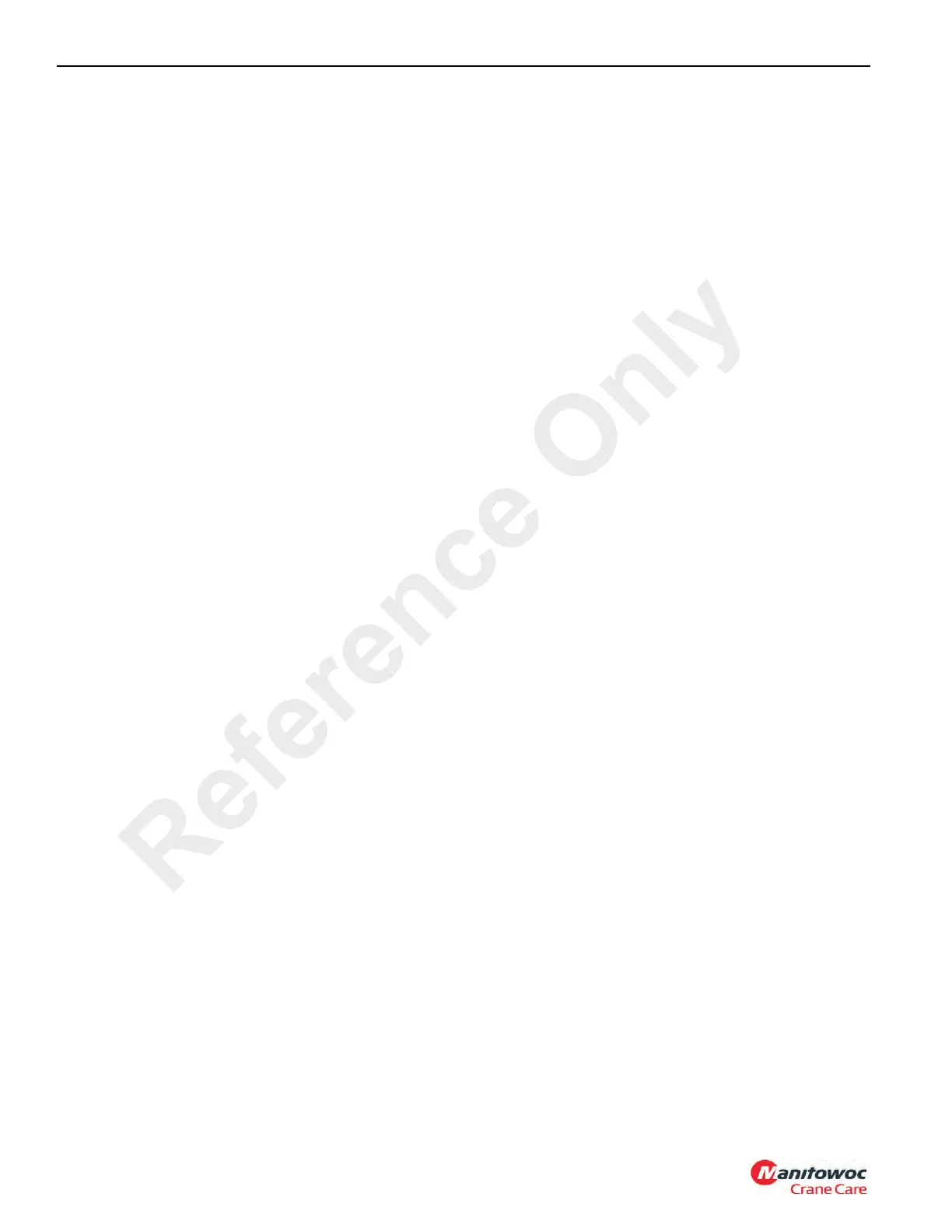